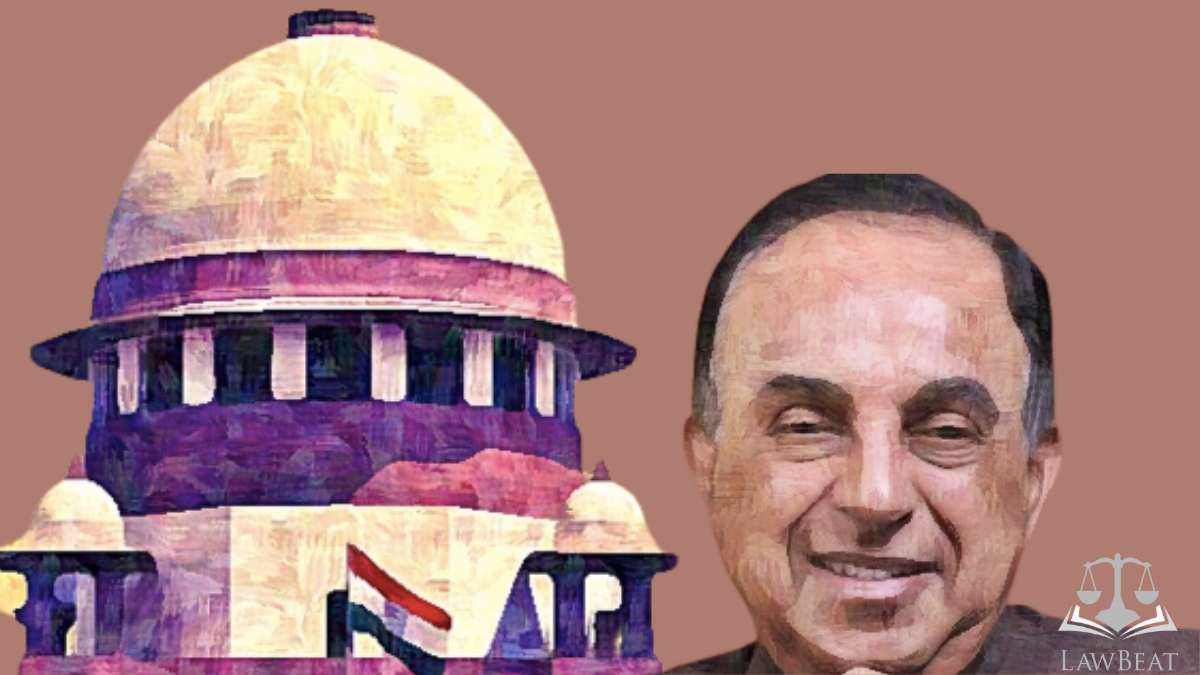"Exception Extended To Ram Janmabhoomi Must Be Extended To All Matters Of Dispute": Supreme Court Issues Notice In Plea Challenging Places Of Worship Act, 1991

X
Supreme Court today issued notice in the plea of Dr. Subramanian Swamy and Satya Paul, challenging the vires of Places of Worship Act, 1991.
A Full judge Bench of Chief Justice SA Bobde, Justice AS Bopanna and Justice V. Ramasubramanian agreed to hear the petitioner in person, seeking direction to read down Section 3 and 4 of the Places of Worship Act, 1991 and declare them ultra vires to Articles 13,25,26 and 32 of the Constitution.
Matter has been listed for hearing with Advocate Ashwini Kumar Upadhyay’s plea seeking similar relief.
Grounds preferred inter-alia:
- Places of Worship Act, 1991 bars jurisdiction of the present Court, thereby defeating Right guaranteed under Article 32 of the Constitution. [SC Advocates v. Union of India, (1993) 4 SCC 441]
- Act of 1991 restricts access to places of religious worship further resulting in violation of the Petitioner(s) Fundamental right under Article 25.
- When a Statue is challenged as violative of a fundamental right, its real effect or impact on the fundamental right is of primary importance. Courts should always endeavour against such encroachments and strike down restriction as soon as it reaches the magnitude of total annihilation of the right.
- Jurisdiction of Court under Article 32 and Power of Judicial Review is an integral part of the Constitution and cannot be taken away by any legislative enactment. [SP Sampath Kumar v. Union of India, AIR 1987 SC 386]
- Act of 1991 is against the basic Structure and spirit of the Constitution and must be strike down for the same reason. [Minerva Mills v. Union of India, AIR 1980 SC 1789]
- Even where a statutory provision bars the jurisdiction of Courts generally, it will not/cannot bar the jurisdiction of the Hon’ble High Court under Article 266, or that of the Hon’ble Supreme Court under Article 32. [Union of India v. Narasimhalu, (1970) 2 SCR 145]
- Exception extended to the Ram-Janmbhoomi matter should be extended to all such matters of dispute.
- Under Section 4(2) of the Act of 1991 all or any matters before commencement of the Act will be decided in accordance with Section 4(1) of the Act, in which it is declared that the religious character of a place of worship existing on the 15th day of August, 1947 shall continue to be the same as it existed on that day. This nullifies the role of Judicial Review and Courts as it fails to showcase the status of such disputes long pending. [Kashi Vishwanath and Gyanvapi Mosque]
- Section 3 of the Act deprives one’s right to pray at the place which was destroyed by past invasion of foreign forces and which still exists as a temple. For example Kashi Vishvanath-Gyanvapi Mosque.
- Any such law which restricts the Petitioner(s) right to pray is violative of Article 25 of the Constitution of India and is void ab-initio read with sub-article 2 of Article 13 of the Constitution of India. Further, Section 4 of the Act of 1991 is unconstitutional as the same is hit by the Petitioner(s) Fundamental Right enshrined in Article 25 and 26 to freedom of conscience and the right to freely to practice profess and propagate religion.
Also read Places Of Worship Act, 1991: Supreme Court Issues Notices In Plea Challenging Validity of Provisions
Next Story
